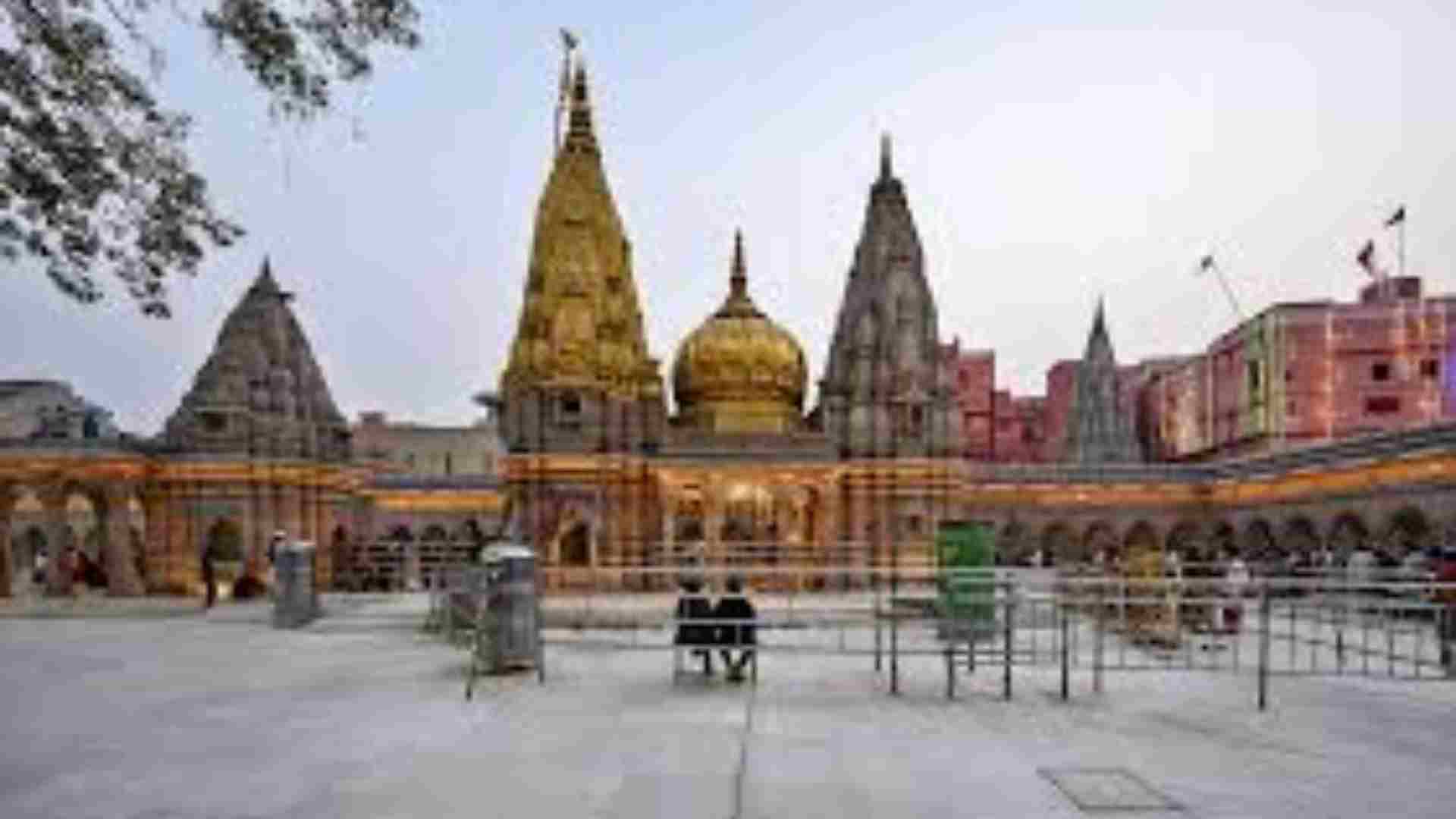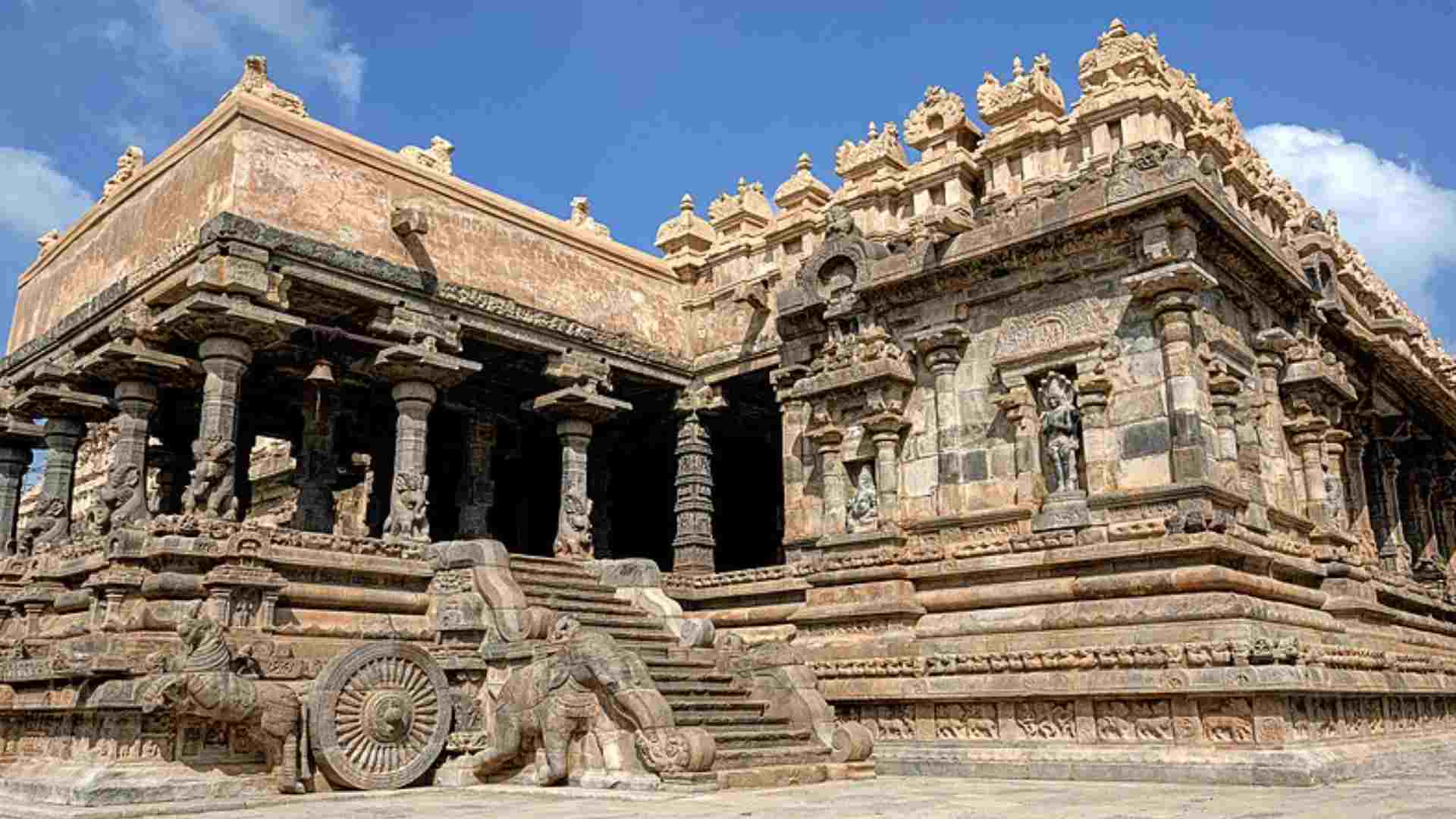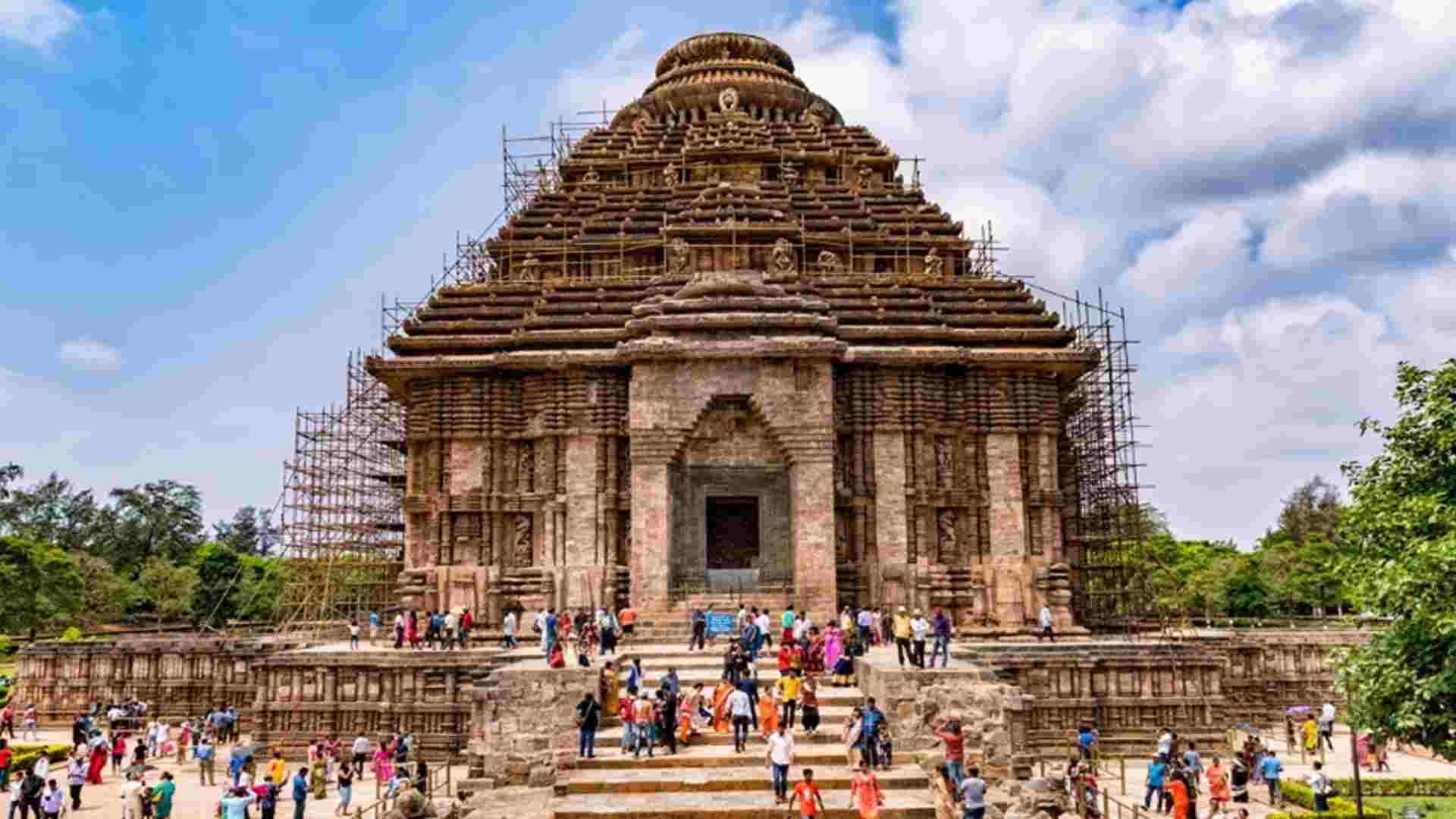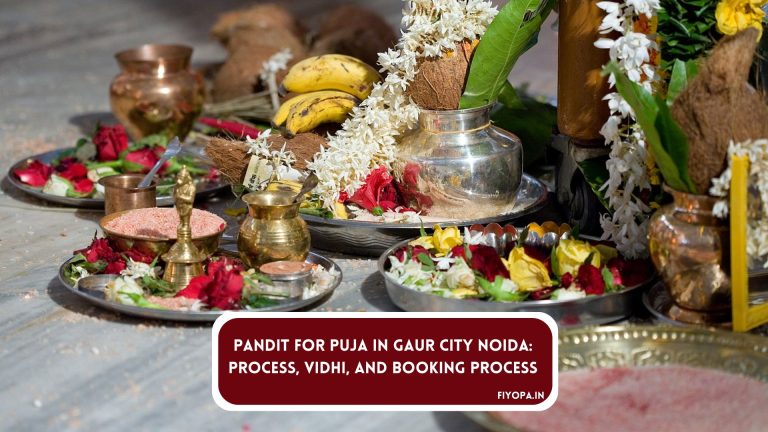10 Must-Visit Temples in Banaras: A Spiritual Journey Through Ancient Architecture

Welcome to Banaras where each stone whispers ancient sagas and every temple preserves eons worth of religious wisdom. Are you set to make a transformative journey through the carefree and timeless city? Banaras, also referred to as Varanasi, is home to more than two thousand temples, each beloved for its marveling architecture and divine relics.
We are now about to feature the ten most famous temples starting from the golden-spired magnificent Kashi Vishwanath Temple that symbolises the city’s heritage to the beautifully crafted Nepali Temple. These temples live beyond religious purposes. They are supreme reflections of Indian architecture, culture, and spirituality for everyone, including curious wanderers, believers, historians, children, and elders.
Come along and let us reveal the divine of Banaras through its most sacred temples.
The Sacred Legacy of Varanasi’s Temples
Varanasi, Kashi, or Banaras, is one of the oldest cities in the world developed through the conjunction of civilization. The city is filled with spiritualness that can be sensed through various temples omnipresent in its ancient landscape, each telling its prodigious tale of faith, devotion, and architectural wonder.
India’s spiritual India has over 23000 relics that carve out their legacy through the devotion of the populace making it an Archaeological marvel. They do not just remain as lifeless stones and marble slabs carved into temples, but as revered ground that is worshiped by millions devout to these structures as feats of architecture. From the narrow streets of the old city to the regions bordering the divine River Ganges, temples replicate an angelic quilt that has been mesmerizing every pilgrim for hundreds of years.
The temples of Varanasi mark the untold history of the rise and downfalls of the major empires that ruled the world. Most temples were demolished during the Mughal era but were later restored to higher pride. This cycle of destruction and rebuilding represents the city’s spirit which resiliently vows to protect its heritage.
The design of the temples illustrates various styles of architecture from Nagara style to modern forms. Each temple is built with intricate religious details like the steps leading to the sanctum and the carvings present on the walls. It is believed that the spires (shikharas) of these temples mark the movement between the earthly and divine worlds.
Unlike stagnant museums, the temples of Varanasi are active places of worship. Even today they are of great importance to the spiritual and cultural life of the city’s people. The incense, the showers of devotees, and the melodious chanting of mantras give an impression of time standing still and every moment being in sync with the distant glorious history.
Kashi Vishwanath Temple: The Crown Jewel

Kashi Vishwanath Temple is famous not only across India, but also to devotees from all over the world because it is one of the most respected Jyotirlingas which is why it receives pilgrims in millions every year. It is located in Varanasi, at the center of the city, capturing the attention of many with its architectural beauty.
This temple has a long history which can be traced back to the ancient Kashi Vishwanath Temple which was mentioned in the sacred Skanda Purana text. This temple has been demolished and rebuilt many times so its original structure doesn’t exist anymore but its spiritual value is still immense. Its current form was built in 1780 by Maharani Ahilyabai Holkar of Indore, who adorned the temple’s spires with 800 kg of gold plating.
This temple is blessed with something that not many have, the pure gold main three domes which can be seen from all over. All of this is crafted with the temple’s signature exquisite Nagara architecture, so the intricate carvings depicting stories from ancient Hindu mythology come together to tell one larger-than-life tale. And the centerpiece of it all, is the main sanctum sanctorum which holds the main Jyotirlinga.
The temple’s premises are full of glowing energy coming from all directions as fervent devotees continuously chant sacred hymns. This all surrounds the self-manifested Jyotirlinga shrine which represents Shiva in his most divine form. It is believed that praying to this shrine grants one moksha or liberation from the encompassing cycle of death and rebirth.
Since its launch in 2021, the Kashi Vishwanath Corridor has undergone massive changes. The new extension covers an impressive 5,000 square meters and links the temple directly to the Ganges River. Moreover, the corridor contains amenities such as museums, galleries, and spiritual centers that enrich the visit without violating the decorum of the temple’s grace.
Visiting Guidelines
- – Best time to visit: 3:30 AM to 11:00 PM
- – Peak hours: Early morning and evening aarti
- – Dress code: Traditional Indian attire recommended
- – Photography: Not allowed inside the main temple
- – Special rituals: Shringar aarti, Bhog aarti, and Saptsagar puja
Ancient Temples of Divine Power

The Banaras unique culture owes itself to its temples, which are all architectural marvels in their own right. These temples serve as energy reservoirs that have preserved the city’s ethos since ancient times. This timeless energy attracts spiritual travelers from all around the world.
Kashi Vishwanath Temple: The Crown Jewel
In the center of Banaras, in the city’s heart, lies the golden Kashi Vishwanath Temple – one of the most prominent pieces of architecture witnesses in the country, and one of the renowned Jyotirlingas temples. The Maharaja of Punjab Ranjit Singh gifted the temple a gleaming golden spire which is the centerpiece of the building. The temple is known for harboring the ancient sacred Shiva linga and is believed to be the first jyotirlinga where Lord Shiva transformed into an endless radiant pillar.
The recently remodeled holy shrine measures over 5 lakh square feet, linking the heavenly river Ganges via Jalasen ghat. The marble engravings and carvings are considered some of the best works of the Nagara style. The ghat provides direct access to the river and the enormous courtyard can house thousands of worshipers.
Durga Temple: The Monkey Palace
The remarkable Durga Temple is an example of recently developed Nagara architectural design. As the temple is home to a lot of monkeys, it is colloquially called the Monkey Palace. Its steep ochre colored walls are imposing and give the building set in 18th century a lively appearance, dominating the skyline of Bengal.
HIndu devotees during the time of Navarathri fill the uniquely shaped Duga Kund tank of the temple. On the walls of the tank different forms of Goddess Durga are carved showcasing her victories.
Kedareshwar Temple: Buliding in Water
One of the most famous temples in Benaras is Kedreshwar Temple, which is built on stem of the river Ganga. In rainy season the temple gages of the river Ganga, submerging its bottom half so it appears as though the temple is built inside the river. This gives a majestic view.
The temple is active throughout the year but witnesses a more rush of devotees during Maha Shwaratri. It adds to the uniqueness and beauty of the temples that the upper side of the temple features If Southern and Northern Indian style architecture combined. The tilt of the temple adds to the majestic view being so close to nature.
Related read:- Kumbh Mela 2025: Significance, Infrastructure & Amrit Snan Date.
Modern Marvels of Spirituality
The spiritual landscape of Banaras seamlessly blends ancient traditions with contemporary architectural marvels. These modern temples stand as testament to the city’s evolving spiritual journey while maintaining its sacred essence.
New Vishwanath Temple
Located within the prestigious Banaras Hindu University campus, the New Vishwanath Temple is a magnificent structure that showcases modern architectural brilliance. Built in 1966, this temple features pristine white marble construction with intricate carvings that depict scenes from Hindu mythology.
The temple’s spacious interior accommodates thousands of devotees, making it particularly accessible during major festivals. Its seven-story structure houses multiple shrines, with the main sanctum dedicated to Lord Shiva. The temple complex also includes a museum that displays ancient manuscripts and artifacts.
ISKCON Temple
The ISKCON Temple, established in 1975, represents a perfect fusion of traditional spirituality and modern aesthetics. This contemporary spiritual center attracts devotees from across the globe, offering a unique blend of Krishna consciousness and architectural beauty.
The temple’s distinctive features include vibrant murals depicting scenes from Lord Krishna’s life, modern amenities for visitors, and a peaceful meditation hall. Regular bhajan sessions and spiritual discourses create an atmosphere of divine connection while maintaining modern comfort.
What sets these temples apart is their commitment to accessibility and inclusivity. They offer well-maintained facilities, clear signage in multiple languages, and organised queuing systems. The integration of modern amenities like digital donation systems and clean washrooms ensures a comfortable experience for international visitors while preserving the sacred atmosphere.
These temples also embrace technology through mobile apps for darshan timing updates and live-streaming of important ceremonies, making spirituality more accessible to the younger generation.
Literary and Cultural Heritage
Varanasi’s temples aren’t just architectural marvels; they’re living repositories of India’s rich literary and cultural heritage. These sacred spaces have inspired countless poets, writers, and artists throughout history.
The Tulsi Manas Connection
The Tulsi Manas Temple stands as a testament to the city’s literary legacy. Built in 1964, this white marble temple celebrates Goswami Tulsidas, who wrote the epic Ramcharitmanas here in the 16th century. The temple’s walls showcase intricate carvings depicting scenes from the Ramcharitmanas, making it a unique blend of spirituality and literature.
Cultural Preservation Through Architecture
The temples of Varanasi serve as living museums, preserving ancient art forms and cultural practices. The Nepali Temple, with its distinctive wood carvings, showcases the cultural exchange between India and Nepal. Its architecture reflects the artistic traditions of both regions, making it a symbol of cross-cultural harmony.
Modern Cultural Activities
Today, these temples continue to be vibrant centers of cultural activities. Many temples host regular cultural programs, including classical music concerts, dance performances, and religious discourses. The New Vishwanath Temple, located within the Banaras Hindu University campus, regularly organises cultural events that attract scholars and art enthusiasts from around the world.
Educational Impact
The temples have played a crucial role in education and knowledge preservation. The temple libraries house rare manuscripts and religious texts, while temple priests pass down ancient traditions and rituals to younger generations. This living tradition of knowledge transfer has helped maintain Varanasi’s status as a center of learning and culture.
Temple Architecture Through Ages

The architectural evolution of Varanasi’s temples reflects the city’s rich spiritual heritage spanning over three millennia. Each temple stands as a testament to the diverse architectural styles that have shaped this sacred landscape.
Ancient Nagara Style
The Nagara architectural style dominates many of Varanasi’s ancient temples, characterised by their distinctive curved spires and intricate carvings. The Durga Temple exemplifies this style with its multi-tiered structure and ornate stone work, showcasing the masterful craftsmanship of medieval artisans.
Medieval Influences
During the medieval period, temples incorporated regional elements, creating unique hybrid designs. The Nepali Temple stands out with its pagoda-style architecture, blending Nepalese craftsmanship with local traditions. Its wood carvings and metalwork demonstrate the cultural exchange between Nepal and Varanasi.
Colonial and Modern Era
The British colonial period introduced new architectural elements, visible in temples like the New Vishwanath Temple at BHU. This modern interpretation combines traditional Hindu temple architecture with contemporary design principles, featuring spacious halls and improved accessibility.
Architectural Symbolism
Each architectural element in Varanasi’s temples carries deep symbolic meaning. The vertical spires represent the sacred Mount Meru, while the intricate geometric patterns symbolise the cosmos. The Kashi Vishwanath Temple’s golden spire serves as both a spiritual beacon and an architectural marvel.
Contemporary Conservation
Modern restoration efforts focus on preserving these architectural treasures while maintaining their original character. Advanced conservation techniques protect ancient stone work and structural elements, ensuring these sacred spaces continue to inspire future generations.
Planning Your Temple Visit

Best Time to Visit
The ideal time to explore Banaras’s temples is during the winter months from October to March when the weather is pleasant and comfortable. Early mornings, between 4 AM to 8 AM, are perfect for temple visits as you can avoid the crowds and experience the serene spiritual atmosphere.
Essential Items to Carry
When visiting temples in Banaras, make sure to carry:
- – Comfortable footwear that’s easy to remove
- – A small bag for keeping shoes
- – Modest clothing that covers shoulders and knees
- – A bottle of water
- – Small denominations of cash for offerings
- – A light shawl or stole
Temple Etiquette
Respect local customs and traditions while visiting temples. Remove your shoes before entering, maintain silence in prayer halls, and avoid taking photographs inside the main sanctum. Most temples don’t allow leather items or non-vegetarian food items within the premises.
Getting Around
Navigate between temples using:
- – Auto-rickshaws for short distances
- – Cycle rickshaws for narrow lanes
- – Pre-booked cabs for longer routes
- – Walking tours for nearby temples
Remember that many temples are located in narrow lanes where vehicles can’t reach. It’s advisable to hire a local guide who knows the intricate network of galis (lanes) leading to these sacred sites.
Conclusion:
As I said while starting my reminiscence with the Banaras temples, I will conclude with them too. The same level of architectural wonder is rarely matched across the world, where these temples form an unforgettable image like that of the Kashi Vishwanath golden spires or Bharat Mata Temple’s one-of-a-kind structure. These temples represent much more than simple practices of worship. Each intricately carved structure is a shrine for century-old rich spiritual traditions, telling tales of dedication and wisdom deeply hidden within them. In the same manner, they are distinct pieces of art that provide different sets of ancient and contemporary rituals for anyone from anywhere in the world.
I encourage you to feel the energy surrounding these sacred temples and find the deeper meaning within yourself. Don’t hesitate to share your experiences in the comment section and more importantly, remember to embark on your spiritual journey to Banaras temples and experience their unmatched magic firsthand.
Related Read:- BAPS Swaminarayan Mandir Pune: Timings, History, and Highlights







